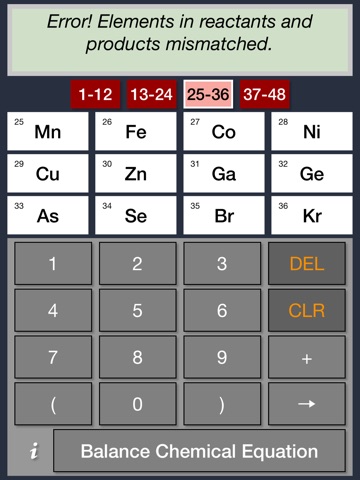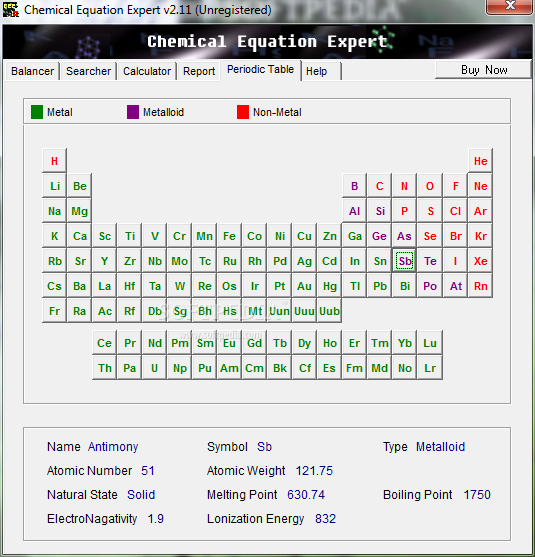


The best way to learn how this system works is to practise the steps. Repeat until you have the same number of every atom on the LHS as on the RHS.Every time you add a big number, you multiply the whole compound by that number, and so you adjust the numbers in the table accordingly.If the number of each atom on either side is NOT the same, you need to use big numbers in front of each element or compound to even them out.If the number of each atom on either side is the same, you’re all good, and the equation is balanced.Our favourite method is to use a table to tally the number of atoms of each element on the LHS of the equation and the RHS of the equation. There are several ways to approach a difficult equation. So the equation is balanced.īut sometimes, the answer isn’t obvious.

This is clearly a balanced equation: there’s one carbon and two oxygen atoms on the LHS and the same on the RHS. For example, take the simple equation below: The number of atoms of each element on the right-hand side (RHS) of a chemical equation The number of atoms of each element on the left-hand side (LHS) of a chemical equation So what does this mean, exactly? In practical terms it means that: The law of conservation of mass says that in a chemical reaction: the mass of the products = StringSplit, g = StringCases, k = Length,Į = _?UpperCaseQ ~~ _?LowerCaseQ] & s] v = := If = else if (i != coEffs.length-1) out += "+" Ĭonsole.log(solve("Al+Fe2O4->Fe+Al2O3")) Ĭonsole.The law of conservation of mass and balancing chemical equations My implementation does not yet handle cases where there is more than one solution to balancing the equation. One slight tweak was added: I divided the transpose of the null-space vector by the greatest common divisor of the elements to ensure integer values in any solutions. L.R.Thorne, An innovative approach to balancing chemical - reaction equations : a simplified matrix - inverse technique for determining the matrix null space. I employed the augmented chemical composition matrix approach described in store element count in molecule vector, flip sign for other side of '->'įor(i=0,s=n?"Nope!":a *s putchar(*s++))s=m&t>1?printf("%d",t):0 brute force solver, n=0 upon solution - assume at most 30 of each molecule C7H16+O2->CO2+H2OĬ, 442 505 chars // element use table, then once parsed reused as molecule weightsĬhar*s,*m // name and following separator Your program must terminate in reasonable time for all reasonable inputs.Įach test case has two lines: An input and a correct output.A sample input that has no solution is Pb->Au For instance, the following is illegal: 40Al+20Fe2O3->40Fe+20Al2O3 Your program must yield numbers such that their sum is minimal. A number must always be a positive integer. If the number for a molecule is 1, drop it. For the example above, a valid output is: 2Al+Fe2O3->2Fe+Al2O3 The number of atoms for each element must be the same on both sides of the arrow. The output of your program is the input equation augmented with extra numbers. Your program may either read the input from standard input, from the first argument or in an implementation defined way at runtime if neither is possible. You may assume, that the input is never longer than 1024 characters. If the input is invalid, your program may do whatever you like. The input is terminated with a newline and won't contain any spaces. The molecules are separated with + signs, an ASCII-art arrow -> is inserted between both sides of the equation: Al+Fe2O4->Fe+Al2O3 Element names always start with a capital letter and may be followed by a minuscule. In order to make this possible in pure ASCII, we write any subscriptions as ordinary numbers. The input is a chemical equation without amounts. Since you are Bernd's tutor, it is your job to help him! Write a program, that calculates the amount of each substance needed to get a valid chemical equation. Since mathematics isn't exactly Bernd's strongest subject, he often has a hard time finding the exact ratios between the pro- and educts of the reaction. In class he has to design chemical equations for some experiments they are doing, such as the combustion of heptane: Bernd is a high school student who has some problems in chemistry.


 0 kommentar(er)
0 kommentar(er)
